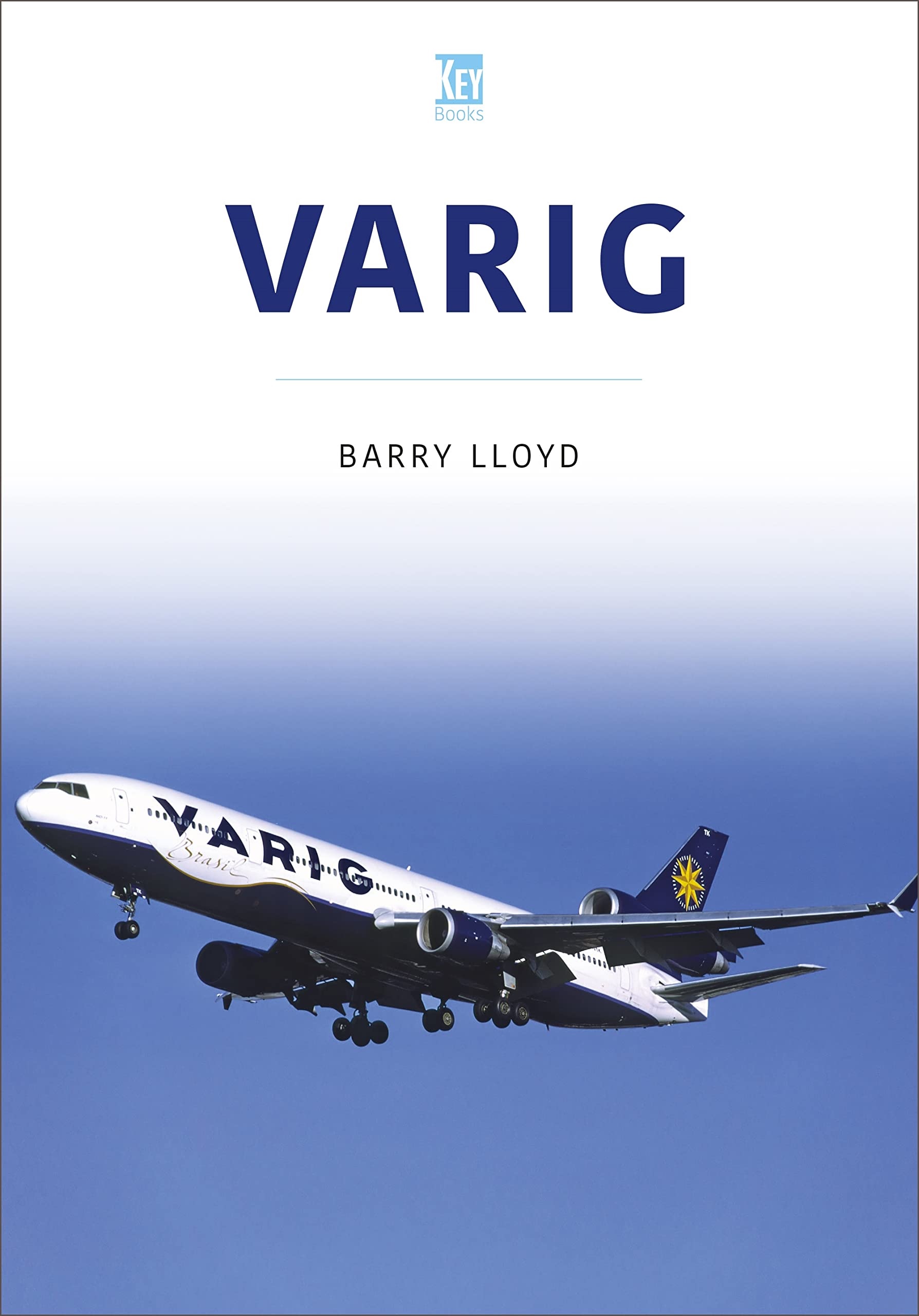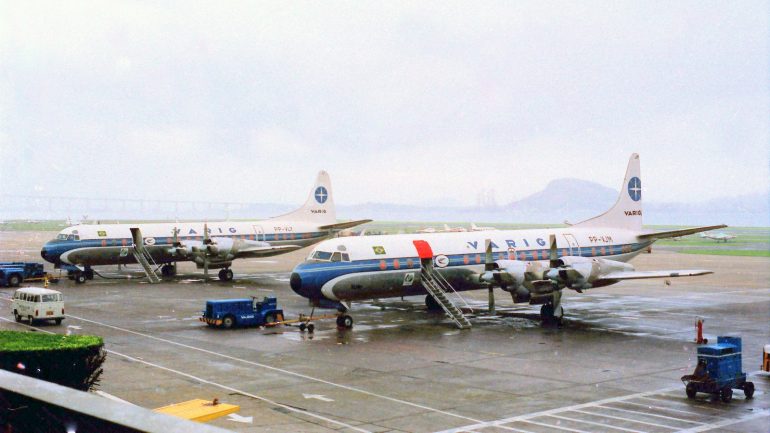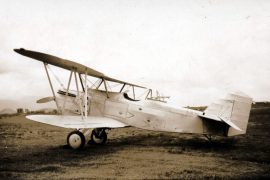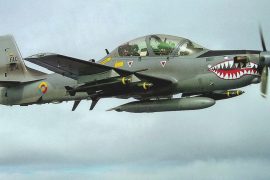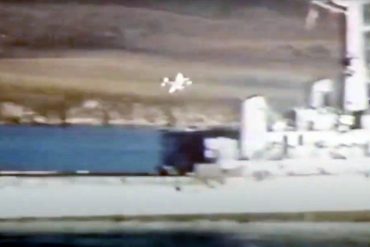In the space of fifty-five years, between 1950 and 2005, the population of Brazil grew from about 51 to 187 million inhabitants, an increase of more than two percent per year. Naturally, such an increase meant that the airlines had increasing numbers of passengers at their disposal.
With its large seats and comfortable interior, including a seven-seat lounge at the rear of some of the aircraft, the Lockheed L-188 Electra II quickly became popular with passengers. Varig’s fleet was operated in an all-economy configuration. In spite of their earlier misgivings with the aircraft Varig had bought from American Airlines, the carrier was encouraged to go back to the market, but by now sources for used Electras were beginning to dry up. Two further aircraft were sourced from Braniff, but they differed from the previous aircraft in that they were equipped with large freight doors and thus capable of carrying cargo, and were occasionally used for this purpose. Varig decided not to convert them, and both aircraft, PP-VLA and PP-VLB, remained throughout their Varig service with just the rear door operative. Their primary duty by this time though, was to operate on the Air Bridge between Rio and Sao Paulo. The Electras began operations on that route in September 1962 and gave almost 30 years of continuous service until the last flight on January 6, 1992. The Air Bridge, during these years, was second only in intensity to the New-York – Washington service, and the operation is worthy of further explanation.

The cities of Rio de Janeiro and São Paulo are situated a little more than 200 miles (320 km) apart, but in real terms, they have little in common. Rio de Janeiro, with its famous beaches and landmarks, is known to the natives, called Cariocas, as a cidade marvilhosa – the marvellous city. The citizens of São Paulo, called Paulistas, see things rather differently. They consider the Cariocas to be lazy and hedonistic, and themselves to be energetic and hard-working. There are good reasons for this. While Rio was the capital from 1763 until 1960 and therefore the centre of diplomacy and banking, São Paulo grew rapidly during the 1960s through the trading of commodities, not least of which was coffee. There is a standing joke in São Paulo that the famous statue of Christ in Rio with its outstretched arms, will clap its hands when the Cariocas finally do some work. Despite the rivalries, the wheels of business and industry mean that frequent travel between the two cities is essential. And not only for business. The only alternative to flying is to travel by road, since there are no rail journeys available. Even today, a typical road journey can take five hours, with heavy traffic in evidence throughout the journey. The relatively low fares on the Air Bridge in the 1960s and later frequently attracted a lot of what is known in the airline industry as VFR traffic – visiting friends and relations. The current population of São Paulo city itself is 12 million and that of Rio is close to seven million, so there is ample opportunity for this. The fact that both airports used for the Air Bridge are less than 5 miles (8 km) from the city centre, is an added attraction. However, the fact that they are city-centre airports naturally restricts their flying hours, with the first departures from either airport not permitted before 0600, and the last departure at 2300. During the time of the Electra operation, there would typically be 37 return flights during weekdays between the two cities, with 22 return flights at weekends. In addition to this, there would be 16 flights a day each way between Rio’s Galeão and São Paulo’s Congonhas airports, with a combination of Boeing 727s and 737s.

At the peak hours of the day during the week, there would be a flight every 15 minutes. Although the flight was primarily operated by Varig, the route was in fact a pool service operated in conjunction with VASP, Cruzeiro and Transbrasil, with revenues being split 52 percent, 22 percent, 19 percent and seven percent accordingly. Tickets for the Air Bridge could be bought at any of the four operators, but reservations were not required. Initially, all the aircraft carried Varig titles, but the other three carriers complained that since they were operating a pool service, their names should also be on the aircraft. A compromise was reached in 1975, whereby four of the aircraft, PP-VJE, PP-VJN, PP-VJU, and PP-VLC, had their Varig titles and logos removed, leaving just the Varig cheat line. However, this lack of identification confused the passengers and in 1979 the full Varig logos were restored. Buoyed by the success of the Air Bridge, Varig purchased a further Electra in November 1976 and a final aircraft in 1986. Varig operated a total of 15 Electras. One aircraft was written off in a landing accident at Porto Alegre on February 5 1970, but fortunately there were only minor injuries. The Air Bridge was generally a very smooth operation, and even a major fire which almost destroyed the terminal building at Rio’s Santos Dumont airport in 1999, did not hamper the operation. For the six months during which the terminal was rebuilt, an airport hangar was used for processing Air Bridge passengers.
Inevitably and reluctantly, a decision had to be taken to replace the Electras. After a number of evaluations, including the Fokker 100 and the BAe 146, the Boeing 737-300 was chosen and the final flight with the Electra took place on 6 January 1992. The aircraft which performed it, PP-VJM, made a farewell flight around Rio de Janeiro, which was televised live, before being retired to the Museu Aeroespacial in Campo dos Afonsos near the city.

The second propeller-driven aircraft to achieve legendary status within Varig was the Hawker Siddeley 748, known locally as the ‘Avro’. The airline needed a DC-3 replacement and studied a number of alternative aircraft that were being offered as potential DC-3 replacements. Many airfields in Brazil, particularly in the interior, were still not fully developed, had short unpaved runways and very limited navigation and air traffic control facilities. In December 1965, an HS 748 was leased to Varig for almost a year, and was registered as PP-VDQ. The first flight operated by the aircraft was between São Paulo and Iguaçu Falls on December 23 1965 and such was the reliability of the 748 on the subsequent schedules that they often operated up to 10 sectors per day, with turnarounds being as short as ten minutes at some of the more remote jungle strips. As a result of this, the airline decided on the aircraft, not least because of its demonstrable ability to operate from unpaved airfields. The first of ten aircraft, PP-VDN, was delivered on Nov 14 1967, with the final aircraft, PP-VDX, (PP-VDW was not allocated), being received on September 15 1968. The complete batch was delivered as Series 2 aircraft, but were later converted to Series 2As, which offered improved performance. In 1970, the aircraft were used to operate flights under the title of ‘Rede de Integração Nacional’ (National Integration Network). This network was put in place to open routes to smaller towns in the interior, some of which had previously been operated by the DC-3s and others which had not been operated previously. They were also used frequently on the Air Bridge.
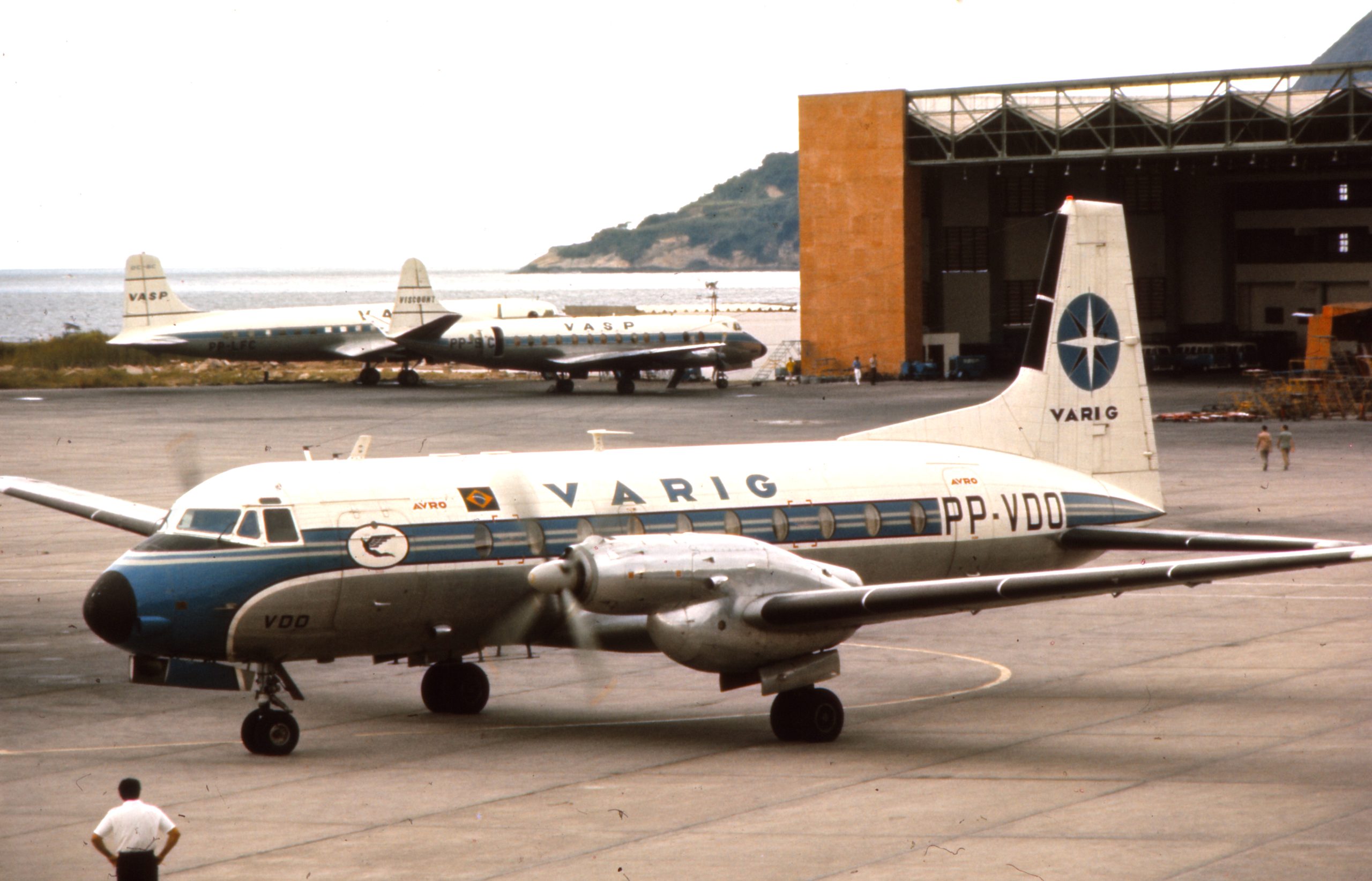
The rapid growth of air travel in Brazil during this period brought about the significant upgrading of many airfields, and thus an increase in passengers. The HS 748, now a victim of its own success, was no longer able to offer the capacity required on many routes and was replaced by jets. By September 1975, the first of the aircraft had been sold off to Bouraq of Indonesia and the last aircraft left service in January 1977.
The other turboprop which Varig operated were four Fairchild Hiller-227Bs, PP-BUG-BUJ, which had been brought into the fleet, following the bankruptcy of Paraense, an operator based in Belém in the north-east of the country. The aircraft had been taken on charge by the Ministry of Aeronautics and then leased to Varig after Paraense had ceased operations on May 30 1970. The Brazilian government had withdrawn Paraense’s operating certificate, following the crash of an FH-227 in the previous March. The aircraft was manufactured as a US version of the F-27, as licensed by Fokker, but with a longer fuselage than the F-27, enabling it to carry 56 passengers, a radome to accommodate weather radar and additional fuel capacity. They were mainly used as supplemental aircraft on the Air Bridge and were painted with the Varig cheat line, but did not carry the Varig logo or titles. The declaration by the Directorate General of Civil Aviation about only using four-engined aircraft on the Air Bridge meant that they were withdrawn from the route soon afterwards. Varig’s habit of nicknaming their aircraft continued with the FH-227. It became known as’ Boko-Moko,’ a phrase basically meaning outdated, after a character in a beer commercial. The aircraft stayed in the fleet for just five years, with two aircraft, PP-BUG and -BUJ being sold to TABA, a third-level carrier based in Belém and operating services along the Amazon. The remaining two aircraft were sold to Aerochaco in Argentina after being stored at São Paulo’s Congonhas airport for several years.

One of the biggest shocks for Varig during this period was the sudden death of the airline’s founder, Ruben Berta. On December 14 1966, he was working at his office desk in Rio de Janeiro when he felt stabbing pains in his chest. A doctor was called, but Berta insisted on continuing to work. An hour later, he was dead. He had worked for Varig for 40 years, having joined the airline at the age of 19.
This is an excerpt of chapter 3 of the book “Varig” by Barry Lloyd. You can buy your copy from Amazon by clicking here or the book cover below.
